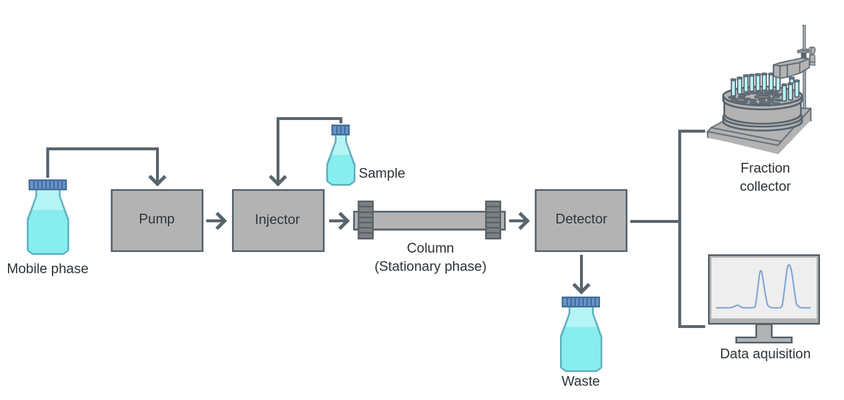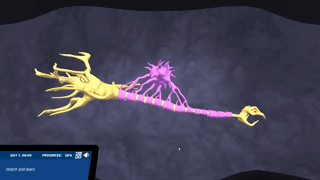
Parkinson's disease is a chronic condition that affects both the neurological system and the bodily components that are under the control of the nervous system. Symptoms emerge gradually. The initial sign could be a slight tremor in only one hand. Although tremors are typical, the disease might also make you stiff or move more slowly.
Your face may be expressionless in the initial stages of Parkinson's disease. You might not swing your arms while you walk. Your speech could become slurred or dull. As your illness advances over time, your Parkinson's disease symptoms get worse.
Despite the fact that there is no cure for Parkinson's disease, medicines may greatly reduce your symptoms. On rare occasions, your doctor may advise surgery to control specific brain areas and alleviate your symptoms.
Typically, symptoms start out mildly and get worse over time. People could experience difficulties speaking and walking as the illness worsens. Additionally, they may experience behavioral and mental changes, sleep issues, depression, memory loss, and weariness.
Although almost anyone is at risk of acquiring Parkinson's, certain studies indicate that men are more likely than women to be affected by this condition. It's unknown why, but research is being done to identify potential risk factors. Age is an obvious risk: Although roughly 5% to 10% of Parkinson's patients suffer beginning before they aged 50, the disease often first manifests in those over the age of 60. Parkinson's disease with an early onset is frequently inherited but not always, and some kinds have been connected to particular gene alterations.
The substantia nigra, a tiny region of the midbrain, is where most neural degeneration takes place. Dopamine-releasing neurons are prevalent in this brain region, enabling the brain to direct and coordinate muscle activity.
Parkinson's disease still has no established etiology, but genetics and environment are known to be important contributors. Lewy bodies, which are accumulations of the protein alpha-synuclein, are one of the disease's molecular markers and are seen in neurons in the substantia nigra.
A natively unfolding protein with 140 amino acids, alpha-synuclein is primarily found in the presynaptic neurons. It is highly expressed in the neocortex, substantia nigra, hippocampus, thalamus, and cerebellum, among other regions of the brain.
Although its precise purpose is still uncertain, it is believed that alpha-synuclein contributes to the maintenance of synaptic vesicles within neurons. In order to manage both voluntary and involuntary actions, alpha-synuclein may modulate the neurotransmitter release, like dopamine. It may also affect memory and cognitive function, according to a number of mouse studies. Because of these functions, alpha-synuclein may play a significant role in neurodegeneration. The condition known as Lewy body dementia or LBD is characterized by aberrant accumulations of the protein alpha-synuclein in the hippocampus. The neurotransmitters in the brain are impacted by these deposits, known as Lewy bodies, and these modifications can result in issues with thought, movement, attitude, and mood.
Liquid chromatography is the primary method used to determine alpha composition. synuclein's A form of chromatography known as liquid chromatography uses a liquid as the mobile phase and a solid or liquid as the stationary phase. Gravity is often used in liquid chromatography to move the mobile phase through into the stationary phase.

Figure. General path flow in liquid chromatography.
The bandwidth is also influenced by the kinetics of mass transfer between the two phases. In a chromatographic system, equilibrium between both the mobile and stationary stages is never quite attained. The effectiveness will be worse the further the system is from equilibrium. Both the sample band's diffusion in the mobile phase and that in the stationary phase have an impact. When solute molecules get caught in deep stationary phase pools or in areas of the mobile phase that are still, they may be supported excessively. A spread-out peak results if a sizable portion of the molecules experiences such delays.
Ion Exchange Chromatography, as well as Size Exclusion Chromatography, are further divisions. Ion exchange chromatography is used to evaluate ionic substances according to charge, whereas size exclusion chromatography is employed to evaluate large molecules according to size. This is the main distinction between the two types of chromatography.
Epigallocatechin-3-gallate or EGCG, a recently discovered antioxidant molecule, is examined in this work to determine how well it can mitigate the oxidative stress damage associated with Parkinson's disease (PD). An appropriate delivery system is suggested to protect the stability and bioactivity of EGCG while allowing controlled delivery at the concentration needed to achieve the desired effect on lewy body formation. For the in vitro study of this mechanism of action, giant unilamellar vesicles have been used as a cell membrane model. Giant unilamellar vesicles or GUVs, are a great model membrane system for researching lipid-protein interactions. Their primary benefit is that they are comparable in size to cells, making GUVs easy to observe under a light microscope. Additionally, GUVs serve as a strong example for biotechnological methods, such as those used in synthetic biological research.
This subject features a huge number of subtopics that need to be comprehended and learned. The molecular characteristics of the disease, the method of diagnosis, the diagnostic procedures, the therapy and management alternatives, and so on and so forth. Continuous research produces fresh information that is relevant to the subject. This can be quite intimidating and difficult to follow for students.
There are many different kinds of neuronal pathways, ranging from the most basic to the most complicated. Monosynaptic reflexes, the reward pathway, the corpus callosum, the pain pathway, the visual pathway, pyramidal tracts, the dorsal column medial lemniscus pathway, cerebral peduncles, and other pathways are examples of major neural pathways. Because of the challenges involved in acquiring knowledge of difficult subjects, students frequently lose interest in studying those subjects.
At this stage in the lesson, we are talking about the function of the neurotransmitters, and we are giving the students a single picture that only contains one plane of the subject matter, in addition to a number of lengthy paragraphs. They are not having the experience of what is actually going on inside the body, which would likely cause them confusion.
Students should have a solid comprehension of the following neurological terms, among others:
The "arms" of a nerve that interact with the axons in order to send impulses toward the cell body are called dendrites.
Axons are lengthy extensions of nerve cells (neurons) that are responsible for transmitting nerve impulses from the cell body and into neighboring neurons.
A neurotransmitter is a chemical molecule that enables the passage of electric signals from one neuron to another through synapses. This transmission takes place between two nerve cells that are connected by synapses. Glutamate, acetylcholine, noradrenaline, dopamine, and serotonin are All examples of neurotransmitters. Gamma-aminobutyric acid and glutamate are further examples.
Ganglion refers to a cluster of nerve cell bodies that are found at the origin of a neuron.
The caudate nucleus is a component of the basal ganglia that is involved in the control of movements on a voluntary basis.
Insufficiency of blood flow to the brain is referred to as cerebrovascular insufficiency. Atherosclerosis of the artery that carries blood to the brain is the primary cause of reduced blood flow, and it is also the most prevalent cause.
Cells of the central nervous that provide support to neurons are known as glial cells. The number of glial cells in the brain is 10-50 times higher than the number of neurons.
Located in the brain's frontal lobe, the hippocampus is a part of the brain responsible for learning and remembering.
An uncontrolled and sudden spasm of the face is referred to as paroxysmal, and the word "paroxysmal" is an adjective.
A seizure that just affects a region of the brain is referred to as a partial seizure.
There are numerous active signaling pathways during neurological activity. Students should understand the alpha-synuclein structure and the EGCG's mode of action. Students frequently find it difficult to focus on the process of proteins switching roles to play in a particular area of the body. If one wishes to comprehend the entire process, research into the more intricate relationships between neurology and biochemistry is necessary. This might not be appealing to the students, especially if there is a lot of content to read.
Students like learning science through facts and evidence. Students, however, prefer to observe processes at the molecular level. Students are more engaged with a topic when it is presented visually, and teachers may more easily put what they have said into practice thanks to graphics like the one below. The Microanatomy of a Neuron is where it came from. Labster offers virtual lab simulation.

The pupils are then encouraged to conduct some chromatography experiments. These "hands-on" activities help students develop their practical skills and deepen their understanding of scientific concepts and phenomena. One more advantage that results directly from taking part in practical training is the acquisition of knowledge of how hazards, risks, and safety work, particularly when learning liquid chromatography.
5. Utilizing Virtual lab simulation
Parkinson's disease, in particular, is a complex and multifaceted area of neurology. We advise students to use Labster's Parkinson’s Disease simulation. We can offer an advanced laboratory simulation to help students understand the neurons more clearly. This 3D simulation aids in examining how a green tea molecule affects the degeneration of neurons in an in vitro model. You can avoid this struggle by using the Labster simulation, which has gamification features that make the subject simple to comprehend.

References

Labster helps universities and high schools enhance student success in STEM.
Request DemoRequest a demo to discover how Labster helps high schools and universities enhance student success.
Request Demo